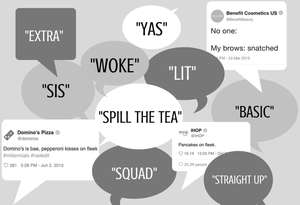
Water Conservation and What We Can Do to Help
Water is an important and necessary part of everyday life. 60% of the human body is made up of water and 71% of the Earth’s surface consists of water as well, according to the USGS. With such an important resource, it is surprising that many people do not know that fresh water is not a renewable source.
You may be thinking, ‘How can water not be renewable? After all, the water cycle is a repeated process, so therefore water must be a renewable resource.’ Even though there is a water cycle, the use of fresh water should be considered a nonrenewable resource. Even though so much of the Earth’s surface is made up of water, only 3% is fresh water, according to National Geographic. And of that 3%, only 1% can be used as drinking water (the other 2% is frozen) according to Sorcatic.org. The rest is saltwater, which can’t be used in our daily life.
Saltwater can be purified into freshwater, however, it does take energy. One way is through a process called reverse osmosis. This process takes saltwater and forces it through a permeable membrane, which removes the larger particles of unwanted material and leaves behind clean water. However, this process does take energy, as stated previously, which means that the process can’t be used as evidence for freshwater being renewable.
Some areas don’t even have access to freshwater locally, so it takes a lot of energy to get it to them. Many places around the world are not near freshwater naturally, which would mean that water would have to be transported there, which contributes to the increasing usage of energy throughout the world.
When reading these statistics, you may wonder why you should worry about it. It’s not like what you do has any control over how much water is available in the world, right? Well, you do have a lot of control over how you use your water. Americans use around 80 to 100 gallons of water a day (USGS). Imagine the amount of water you can save once you become aware of the number of gallons you use daily! Here are some tips on how you can save water in your day to day life right now!
- Taking shorter showers: Did you know that a 20-minute shower uses around 50 gallons (the Sacramento Bees)? Instead of taking a long shower, try to shorten the amount of time you are showering for!
- Turn off the water when brushing: While you are brushing your teeth, you don’t need to have the faucet running. This eliminates the wastage of water when you aren’t even using it! This tip saves around 4 gallons of water each time you brush your teeth (the San Diego Union-Tribune)!
- Don’t use your toilet to throw away tissues: Using the toilet to throw away tissues and other types of garbage wastes around 5 to 7 gallons of water (the City of Santa Cruz). Instead, use a trash can, which does not need water to function!
- Use your laundry machine when full: These appliances use a ton of water! The laundry machine uses 23 gallons, according to the water footprint calculator. By using them when they are full, you are saving water by not using the machines in excess.
There are also other ways you can save water! One way freshwater is lost is through runoff. Runoff harms the environment by increasing the amount of pollution in water systems (and therefore decreasing the amount of fresh water available). Runoff carries what is on the road while it is raining, for example, fertilizers and litter. It then carries these things into the sewer drains and other large bodies of water. The following ideas are ways you can prevent runoff and that you may need an adult before doing:
- Rain Garden: A rain garden is part of a landscape and is put in areas where water accumulates. This helps prevent runoff (when rainwater goes into sewer drains), helping the environment.
- Green Roof: A green roof is when the roof of a building is covered with plants. This helps collect rainwater that usually accumulates on the roofs of buildings.
- Permeable Pavement: Permeable pavement is a type of pavement that absorbs rainwater, instead of allowing it to go into the sewer drains. This also helps prevent runoff.
- Rain Barrel: A rain barrel helps collect rainwater, which allows you to use it for other uses, such as watering gardens!
If you and the people around you use these tips to conserve the fresh water on Earth, you would be saving an abundance of water. This would help save the amount of water that is left for future generations too!

































Comments